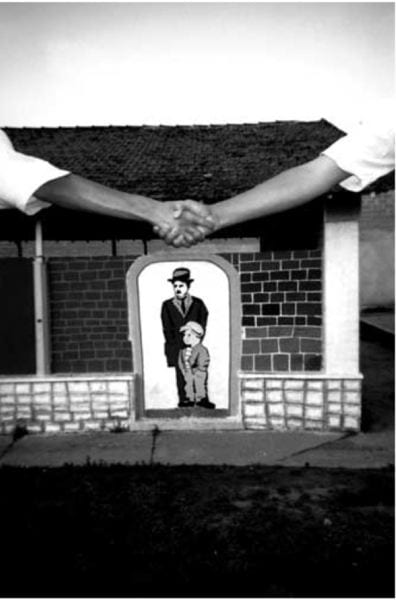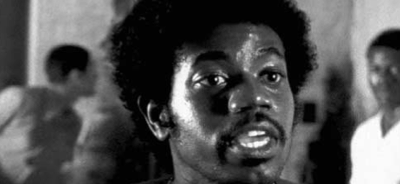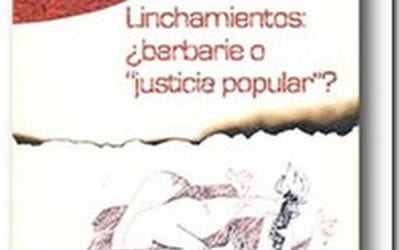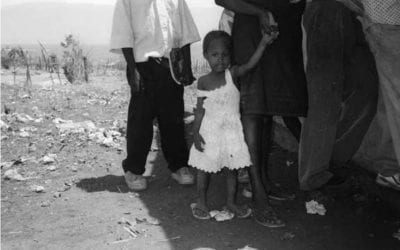Photography and Citizenship
Photography and subtitles by the children of The Photography and Citizenship Project

“Handshake does not transmit the HIV virus.” —Felipe. Photo by The Photography and Citizenship Project
This photoessay examines how visual literacy might be used as a tool to prevent HIV/AIDS with at-risk children and youth in Brazilian juvenile centers. Visual literacy can be understood as the ability of people to realize a visual representation system, associated with their capacity to express themselves through it (Donis A. Donis, 1973).
Every day we consume thousands of images through TV, newspapers, outdoor signboards, advertisements, leaflets and other kinds of media. According to writer René Huyghe, “we live in the 20th century in the Image Civilization.” In this image-oriented society, every citizen has the right to be taught to read visually in order to build a democratic society. The photograph, when understood as language, may be an important resource of information to interpret reality and lived experiences. Its ludic aspect allows developing the participants’ sensitivity, creativity and perception. Thus, the photograph shows itself as a powerful tool for the acquisition of knowledge and expression of citizenship.
The Project Photograph and Citizenship at Febem—a detention center that imprisons children and youngsters to serve sentences for murder, robbery and kidnapping—is the result of 13 years of research and practice in teaching children and young people from low-income communities to read through images. The photography classes, which began in August 1999, have enrolled 850 children and young people, as well as 75 monitors. The first of the three modules in the program aims to sensitize and train prison guards through fortnightly development meetings. In the second module, the guards, now educators, give the basic course to the youngsters, emphasizing the importance of self-esteem and the critical reading of images. The third 100-hour module enables the youngsters to work in black-and-white photography studios and laboratory.
HIV/AIDS PROJECT
The environment, peace and HIV/AIDS are among the topics undertaken in the past four years. Within the period from May to November 2001, eight workshops from generated material for the exhibition “FALANDO SÉRIO, MANO !” to raise awareness and clear up prejudices and stereotypes related to HIV/AIDS. The students from this course produced images and texts for an educative and preventive campaign in order to discuss means of preventing contamination of the virus. The exhibition and the catalog went through several Febem units in an awarenessraising work with other children and young people who couldn’t take part in the course. The project was among the finalists of the Unicef Award 2001 in Brazil, and the photographs are part of the Ministry of Health’s 2003 calendar.
Winter 2004, Volume III, Number 2
João Kulcsar is The Photography and Citizenship project’s coordinator and was a Fulbright Scholar at the Graduate School of Education at Harvard University/Project Zero from 2002-2003. He teaches at Senac and in other social projects. Visit www.pan-optico.com.br or e-mail: jkulcsar@uol.com.br.
Related Articles
Nós do Cinema
Half a dozen adolescents with indigenous features and urban garments entered the Rio movie theatre, peering curiously all around at the movie posters and filmgoers. This would be the first…
Linchamientos: ¿barbarie o justicia popular?
If you have stumbled on one of those news stories telling how an angry mob turned a suspected criminal into a human torch in Guatemala and wondered how such medieval violence can take…
Living on the Border
One out of every three children is an orphan here. The non-profit Proyecto Para Ninos Huerfanos, Inc. on the outskirts of Barahona, Dominican Republic, is both a street outreach…




